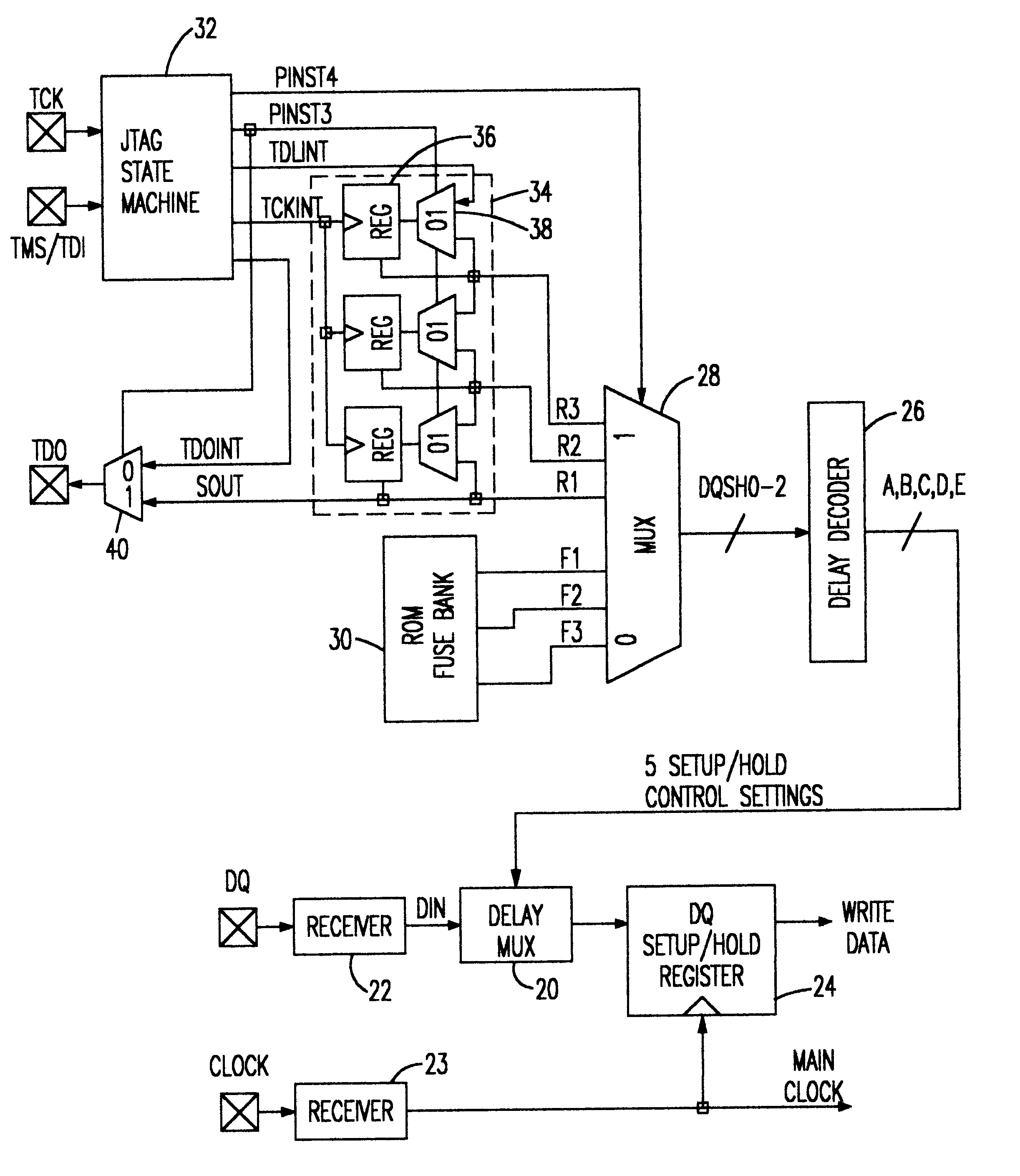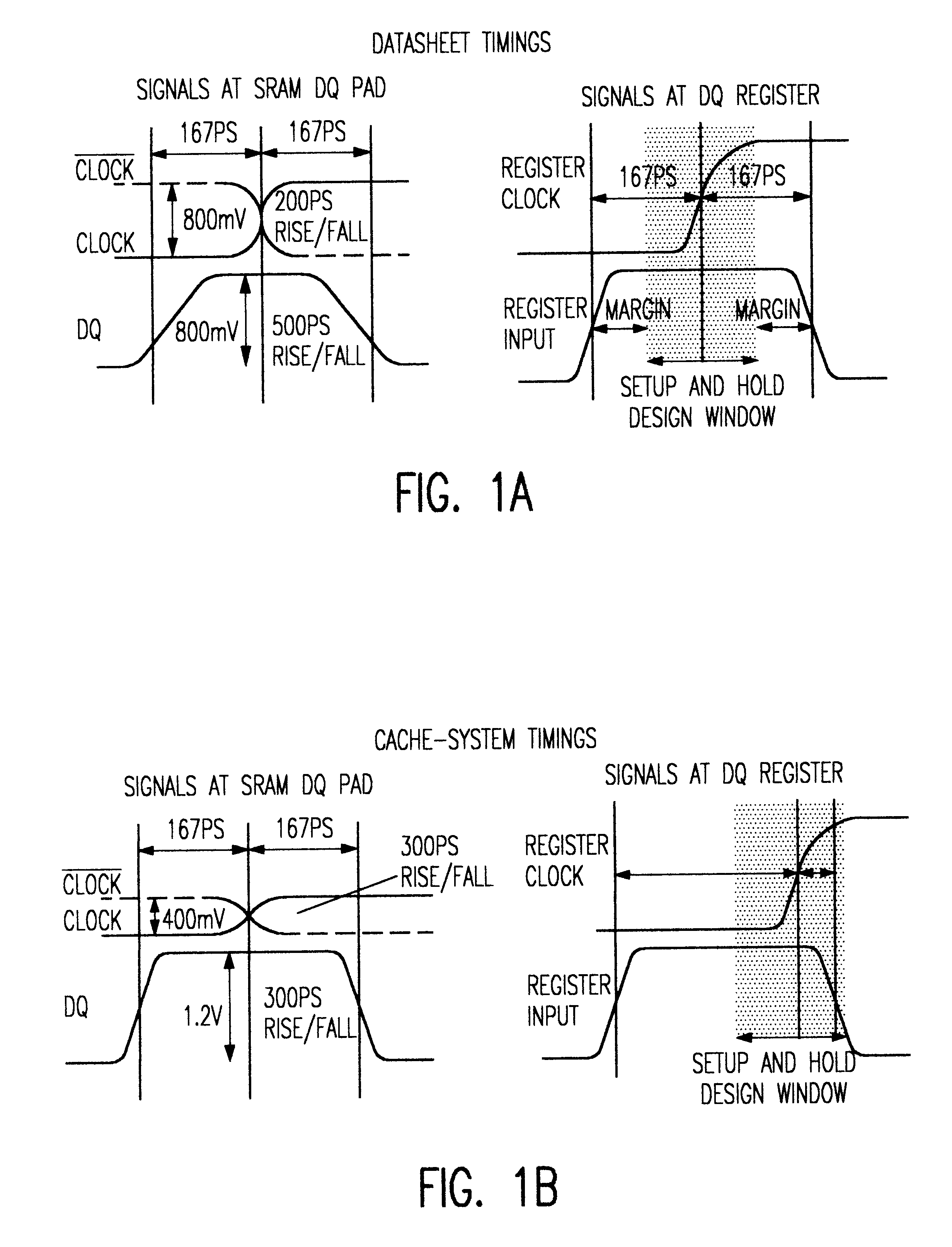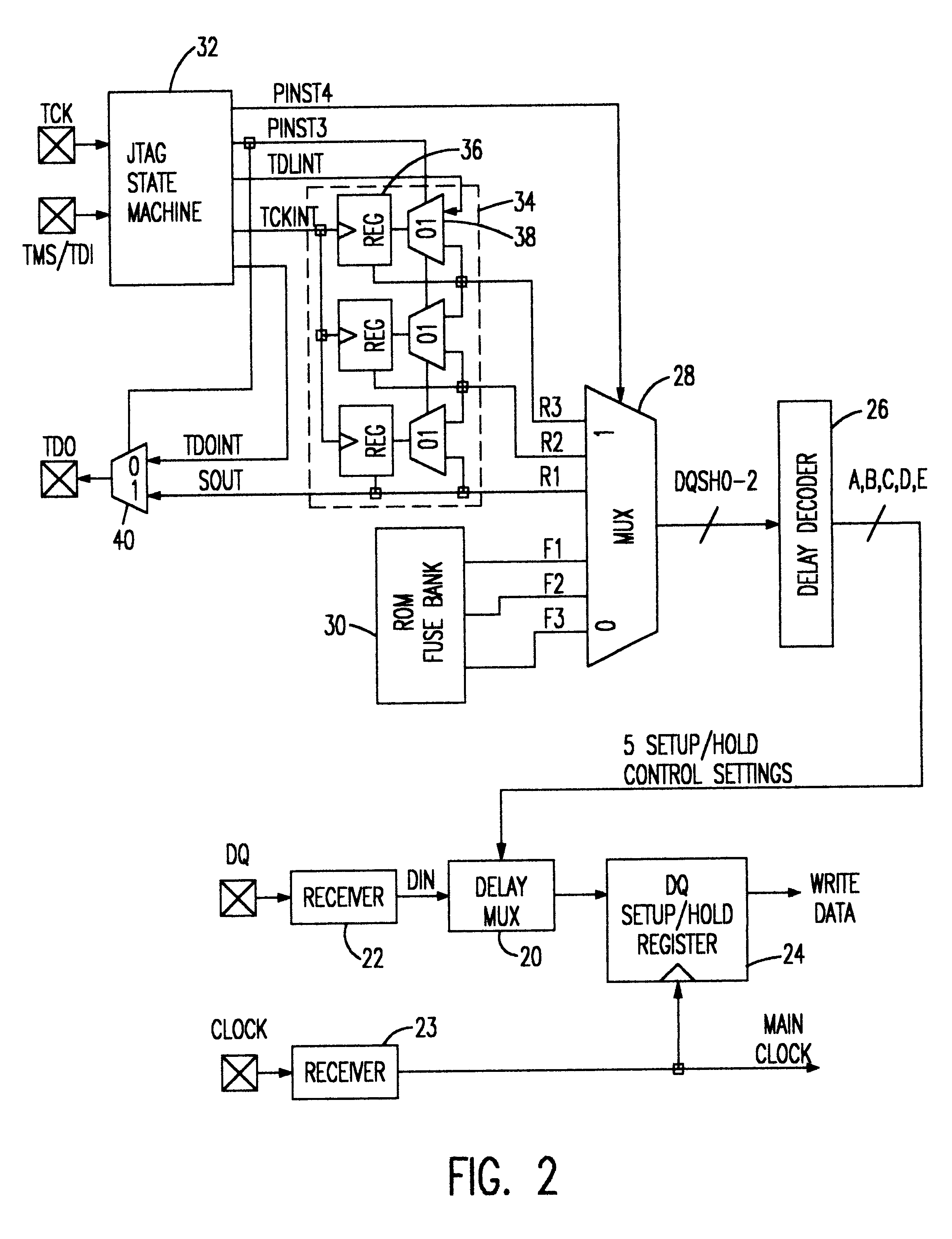Memory having user programmable AC timings
a programmable ac timing and memory technology, applied in the field of memory devices, can solve the problems of exacerbated challenges, data integrity of data-valid windows poses a significant challenge, and static ram provides faster access to data but is more expensive than dram
- Summary
- Abstract
- Description
- Claims
- Application Information
AI Technical Summary
Problems solved by technology
Method used
Image
Examples
Embodiment Construction
Referring now to the drawings, and more particularly to FIG. 2, there is shown the relevant portions of the SRAM module according to the present invention. A delay circuit 20 is placed in a path between data input pin DQ and receiver 22 and the DQ set-up and hold register 24. The register circuit is clocked by the main system clock input through the receiver 23.
For simplicity of illustration, the delay circuit 20 is shown on the data input side (write) of the SRAM. However, it is to be understood that the teachings of the present invention are also applicable to adjusting the AC timings of either data or address pins on both the input side (write) or output side (read) of the SRAM.
A delay decoder 26 outputs one of a plurality of signals that instructs the delay circuit 20 by how much to advance or retard the AC timing of the particular DQ pin. A multiplexer (MUX) circuit 28 inputs a timing program into the delay decoder 26. This timing program originates from one of two places.
The f...
PUM
 Login to View More
Login to View More Abstract
Description
Claims
Application Information
 Login to View More
Login to View More - R&D
- Intellectual Property
- Life Sciences
- Materials
- Tech Scout
- Unparalleled Data Quality
- Higher Quality Content
- 60% Fewer Hallucinations
Browse by: Latest US Patents, China's latest patents, Technical Efficacy Thesaurus, Application Domain, Technology Topic, Popular Technical Reports.
© 2025 PatSnap. All rights reserved.Legal|Privacy policy|Modern Slavery Act Transparency Statement|Sitemap|About US| Contact US: help@patsnap.com



